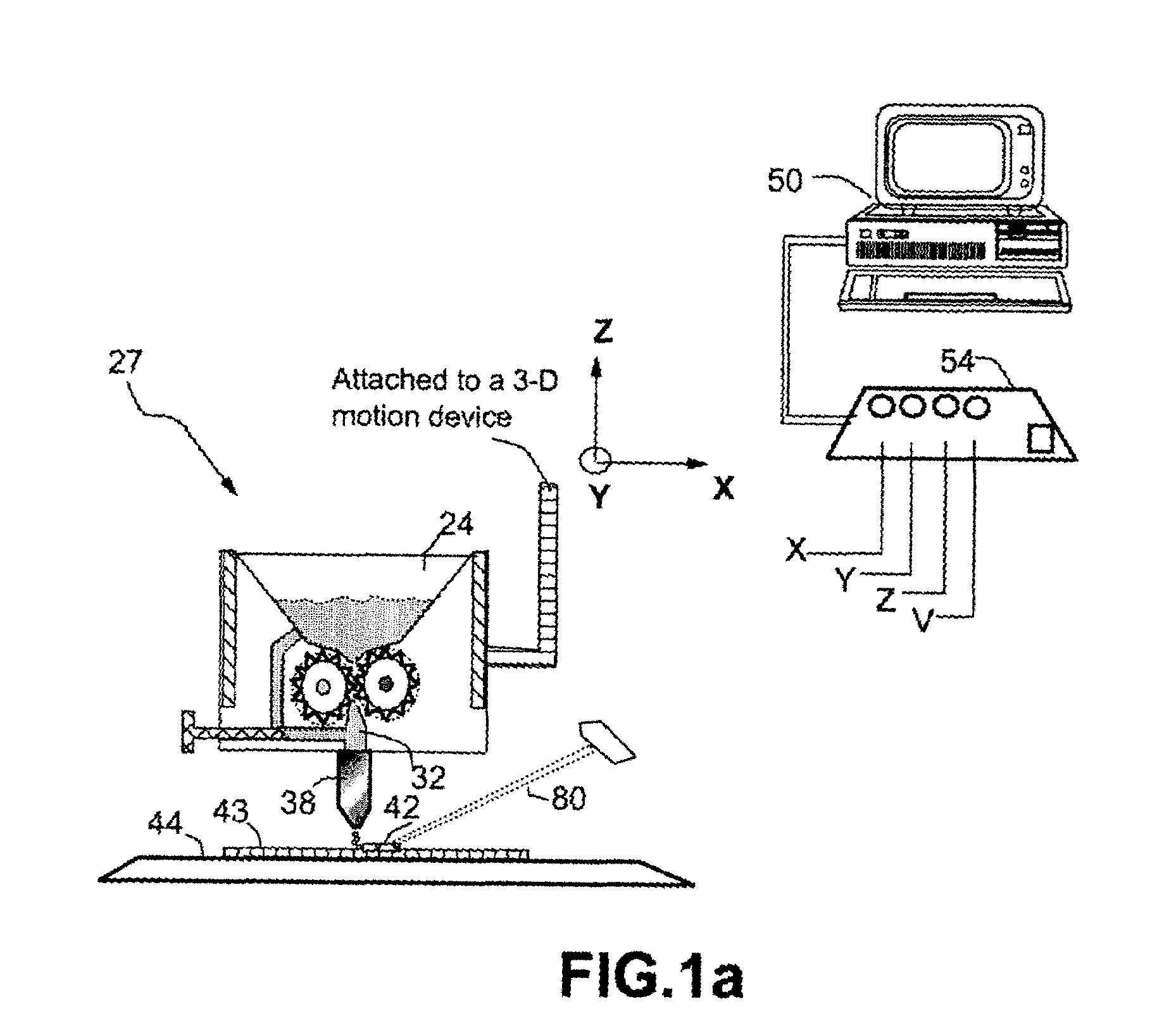Direct write process and apparatus
a technology of direct writing and process, which is applied in the direction of process and machine control, recording apparatus, instruments, etc., can solve the problems of insufficient application insufficient use of large-scale rapid prototyping techniques, and insufficient use of large-scale rapid prototyping methods, etc., to achieve rapid device prototyping and manufacturing, good combination of device accuracy and fabrication rate, and low-volume production run cost-effective
- Summary
- Abstract
- Description
- Claims
- Application Information
AI Technical Summary
Benefits of technology
Problems solved by technology
Method used
Image
Examples
Embodiment Construction
Process and Apparatus:
[0037]FIG. 1(a) illustrates one preferred embodiment of the presently invented process and apparatus for fabricating passive or active components onto a substrate surface to make a micro-electronic device, preferably on a point-by-point basis. The process begins with the creation of a computer-aided design (CAD in the form of a drawing, image, or geometry representation) of the device using a computer 50. This method further involves the operation of a system that includes computer software and control hardware, e.g., motion controller / indexer / servo 54. The system includes a support member 44 by which the device substrate 43 is supported while the device components are being deposited. The system also has an inkjet printhead-based dispensing head 38 for dispensing liquid droplets from a precursor fluid material 26. This material includes a liquid ingredient that helps to make the material in a flowable state while still residing in a chamber 32 of the dispensin...
PUM
| Property | Measurement | Unit |
|---|---|---|
| viscosity | aaaaa | aaaaa |
| operating temperature | aaaaa | aaaaa |
| pressure | aaaaa | aaaaa |
Abstract
Description
Claims
Application Information
 Login to View More
Login to View More - R&D
- Intellectual Property
- Life Sciences
- Materials
- Tech Scout
- Unparalleled Data Quality
- Higher Quality Content
- 60% Fewer Hallucinations
Browse by: Latest US Patents, China's latest patents, Technical Efficacy Thesaurus, Application Domain, Technology Topic, Popular Technical Reports.
© 2025 PatSnap. All rights reserved.Legal|Privacy policy|Modern Slavery Act Transparency Statement|Sitemap|About US| Contact US: help@patsnap.com



